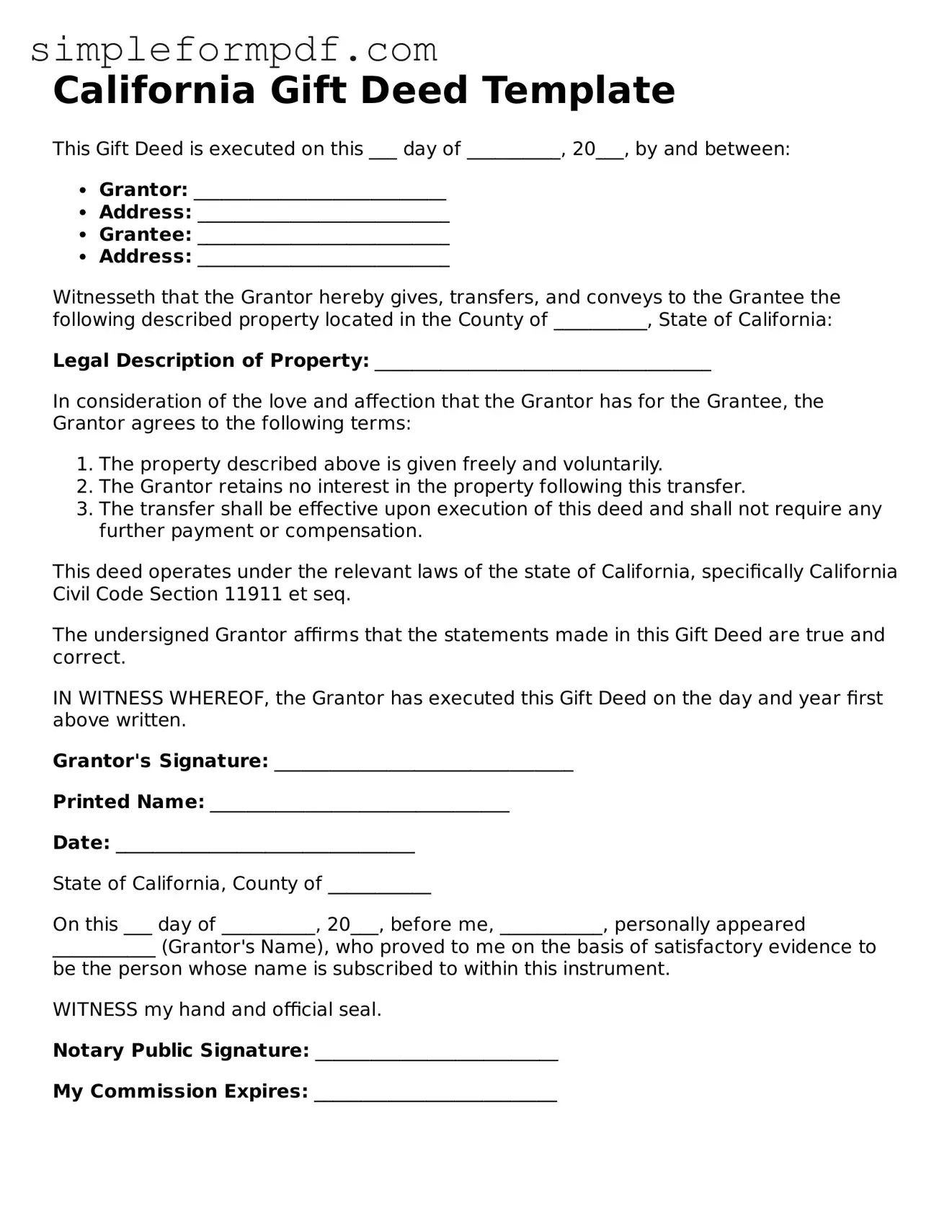California Gift Deed Template
This Gift Deed is executed on this ___ day of __________, 20___, by and between:
- Grantor: ___________________________
- Address: ___________________________
- Grantee: ___________________________
- Address: ___________________________
Witnesseth that the Grantor hereby gives, transfers, and conveys to the Grantee the following described property located in the County of __________, State of California:
Legal Description of Property: ____________________________________
In consideration of the love and affection that the Grantor has for the Grantee, the Grantor agrees to the following terms:
- The property described above is given freely and voluntarily.
- The Grantor retains no interest in the property following this transfer.
- The transfer shall be effective upon execution of this deed and shall not require any further payment or compensation.
This deed operates under the relevant laws of the state of California, specifically California Civil Code Section 11911 et seq.
The undersigned Grantor affirms that the statements made in this Gift Deed are true and correct.
IN WITNESS WHEREOF, the Grantor has executed this Gift Deed on the day and year first above written.
Grantor's Signature: ________________________________
Printed Name: ________________________________
Date: ________________________________
State of California, County of ___________
On this ___ day of __________, 20___, before me, ___________, personally appeared ___________ (Grantor's Name), who proved to me on the basis of satisfactory evidence to be the person whose name is subscribed to within this instrument.
WITNESS my hand and official seal.
Notary Public Signature: __________________________
My Commission Expires: __________________________
